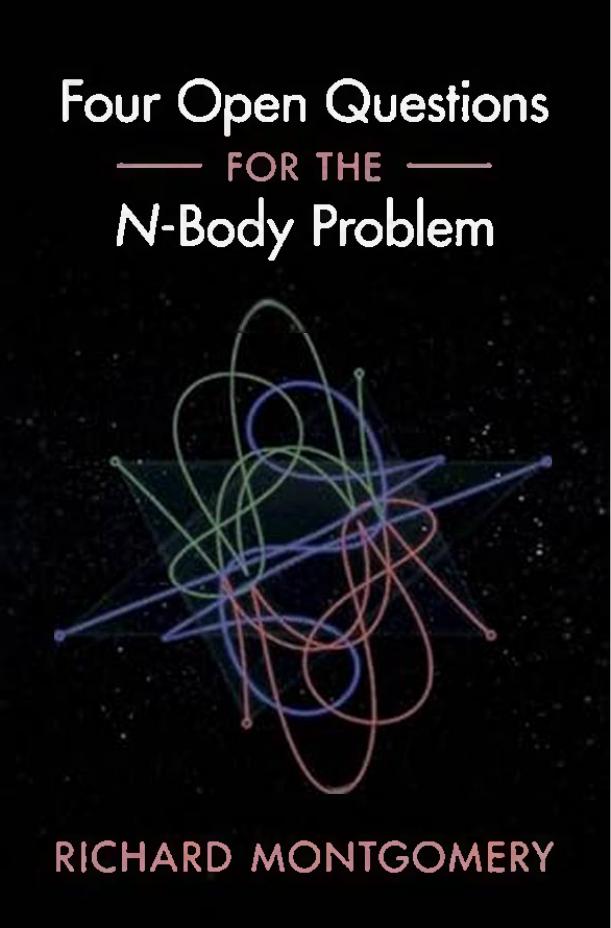

Most ebook files are in PDF format, so you can easily read them using various software such as Foxit Reader or directly on the Google Chrome browser.
Some ebook files are released by publishers in other formats such as .awz, .mobi, .epub, .fb2, etc. You may need to install specific software to read these formats on mobile/PC, such as Calibre.
Please read the tutorial at this link: https://ebookbell.com/faq
We offer FREE conversion to the popular formats you request; however, this may take some time. Therefore, right after payment, please email us, and we will try to provide the service as quickly as possible.
For some exceptional file formats or broken links (if any), please refrain from opening any disputes. Instead, email us first, and we will try to assist within a maximum of 6 hours.
EbookBell Team

4.0
26 reviews
ISBN 10: 1009200585
ISBN 13: 9781009200585
Author: Richard Montgomery
The N-body problem has been investigated since Isaac Newton, however vast tracts of the problem remain open. Showcasing the vibrancy of the problem, this book describes four open questions and explores progress made over the last 20 years. After a comprehensive introduction, each chapter focuses on a different open question, highlighting how the stance taken and tools used vary greatly depending on the question. Progress on question one, 'Are the central configurations finite?', uses tools from algebraic geometry. Two, 'Are there any stable periodic orbits?', is dynamical and requires some understanding of the KAM theorem. The third, 'Is every braid realised?', requires topology and variational methods. The final question, 'Does a scattered beam have a dense image?', is quite new and formulating it precisely takes some effort. An excellent resource for students and researchers of mathematics, astronomy, and physics interested in exploring state-of-the-art techniques and perspectives on this classical problem.
1 Are the Central Configurations Finite?
1.1 Who Cares?
1.1.1 Relations Between Central Configurations and Relative Equilibria
1.1.2 More Reasons to Care
1.1.3 Central Configurations as Critical Points
1.2 What’s Known?
1.2.1 A Few General Results
1.3 Central Configurations as Critical Points
1.3.1 The Planar Case: Proof of Proposition 1.3
1.3.2 Implications of Criticality
1.3.3 Relative Equilibria as Critical Points
1.4 As Rest Points: McGehee Blow-Up
1.4.1 Equilibria Out of Blow-Up
1.4.2 Saari Decomposition and the Homographic Family
1.4.3 A Liapunov Function
1.4.4 Roads to Total Collision
1.5 Words on the N = 4 and N = 5 Proofs
1.6 Relative Equilibria in Four Dimensions
1.6.1 Balancing in Higher Dimensions
1.6.2 Almost Complex Structures and a Loose End
1.7 Further Questions
1.8 Chapter Notes
2 Are There Any Stable Periodic Orbits?
2.1 Really?!
2.1.1 Asymptotic versus Lyapunov Stability
2.1.2 The Oldest Question in Dynamical Systems
2.2 What’s Known?
2.2.1 Weaker Types of Stability
2.2.2 Four Dimensions Stabilize!
2.2.3 Instability
2.2.4 And Our Solar System?
2.2.5 Angular Momentum as Stabilizer
2.3 Spectral Stability, Mandatory 1’s, Return Map, and Reduction
2.3.1 Linearizing About an Orbit: Spectral Stability
2.3.2 Symmetry-Induced 1’s in the Spectrum
2.3.3 The Return Map and Reduction
2.4 KAM Stability and Its Consequents
2.4.1 The Theorem
2.4.2 Applying KAM to the N-Body Problem
2.4.3 Parsing the KAM Theorem
2.4.4 KAM Heuristics
2.4.5 Arnol’d Diffusion: Dodging Sticky Tori
2.4.6 Nekhoroshev Stability
2.4.7 Breakdown of Tori and Diffusion Heuristics
2.5 Case Study: The Eight
2.6 Planetary Systems
2.7 Parabolic Infinity and the Oldest Question
2.8 An Exercise and More Questions
2.9 Chapter Notes
3 Is Every Braid Realized?
3.1 Braiding Bodies
3.1.1 Eclipse Sequences
3.2 Variational Methods: Our Motivation
3.3 What’s Known?
3.3.1 Cheating
3.3.2 N = 3, Almost
3.3.3 The Eight, Variationally
3.4 Choreographies and Other Designer Orbits
3.4.1 Symmetries and Their Representations
3.4.2 Representation for the Eight
3.4.3 Choreographies
3.4.4 Hip-Hop
3.4.5 Designer Orbits
3.4.6 Numerical Algorithms
3.5 The Direct Method of the Calculus of Variations in Detail
3.5.1 Proof of Poincaré’s Theorem, Theorem (3.12)
3.5.2 Other Applications
3.5.3 Breakdown of the Argument for the Standard N-Body Problem
3.6 Eliminating Collisions
3.6.1 Gordon’s Work
3.6.2 The Test Path Method
3.6.3 The Workhorse Lemma of Christian Marchal
3.6.4 Proving Marchal’s Lemma
3.6.5 Step 2: Isolating Collisions
3.6.6 The General Argument and Blow-Up
3.7 A Dynamical Method
3.7.1 Why We Need Equal or Near Equal Masses: Spiralling
3.7.2 Why We Need Some Angular Momentum
3.7.3 The Variational Excess of Stuttering
3.8 Closed and Open Questions
3.9 Chapter Notes
4 Does a Scattered Beam Have a Dense Image?
4.1 Motivation: Rutherford and the Discovery of Nuclei
4.1.1 Scattering Cross Section
4.2 Scattering in the N-Body Problem
4.2.1 Defining the Image of the Scattering Map
4.3 What’s Known?
4.4 Building the Full Scattering Map
4.4.1 Chazy Asymptotics
4.4.2 Scattering Parameters: Existence and Uniqueness
4.4.3 Blowing Up Infinity: Proof of Theorem 4.5, Part (A)
4.4.4 Systems of Rays and Scattering as Lagrangian Intersection Theory
4.5 More Open Questions
4.6 Chapter Notes
5 open-ended questions
4 open ended questions
4.nf.1 questions
4.2.1 conclusion questions hbs
three-body problem explained
3.4.2 conclusion questions hbs
Tags: Richard Montgomery, Questions, Body